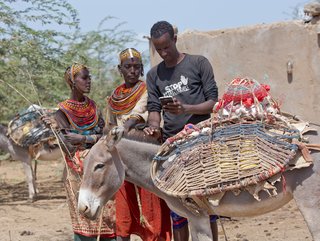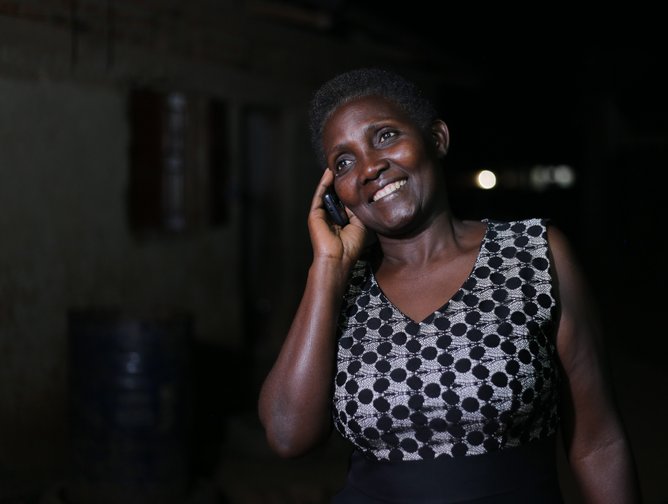Importance of cooperation in a moment of mobile history

The United Nations’ Sustainable Development Goals (SDGs) represent the 17 critical objectives that the world needs to work towards. Its ambitions represent nothing short of fundamental transformation – tackling poverty, ensuring peace, reversing climate change, and ensuring equal opportunities for all people.
This blueprint has been adopted by all of the UN member states. And, through GSMA, the mobile industry was notably the first industry to commit to the SDGs.

Relating the SDGs to telecoms
The history of the International Telecommunication Union (ITU) long predates that of the SDGs. The ITU has a 150 year history, bringing governments, industry leaders and experts together under one roof, to enact change.
“We're a vital part of the engine that powers the internet. We are the global platform for emerging technologies. Our role is key, in everything from harmonising the radio frequency spectrum and satellite orbits, to developing the global technical standards that underpin the digital world, and to promoting digital development in the global south,” asserts Doreen Bogdan-Martin, Secretary-General of the ITU.
Speaking at this year’s Mobile World Congress, Bogdan-Martin outlines how the telecommunications industry can use the SDGs to measure its success, and why the digital cooperation ITU facilitates is more important now than ever before.

What’s at stake?
The SDGs were adopted in 2015. This means that we are now more than halfway through the period granted to meet the targeted agenda.
At this moment in time, Bogdan-Martin asserts, there are three possible scenarios that could arise – each directly depending on how we choose to use the second half of this allotted time.
In the first scenario:
“Digital technologies help to put the SDGs back on track. Our industry enables the transition to net-zero emissions across the economy. New paradigms like Web 3.0 become mainstream.
“It's inclusive, so no more digital gender gap. It's affordable, it's secure. Farmers, teachers, students, doctors, patients – everybody has the digital skills they need to succeed. That's what universal meaningful connectivity looks like.”
In the second scenario:
“We make some progress on the SDGs, but we're still falling short. Emerging technologies are going mainstream, but remain inaccessible to many. We're still playing catch up when it comes to closing the digital divide between developing and developed countries; between urban and rural; between men and women, younger and older. It'll take hundreds of years to achieve gender equality.
“And that's what happens, ladies and gentlemen, if we allow the status quo to continue.”
In the third scenario:
“We fail to rescue. The SDGs’ development is stalled or it's going backwards. The climate crisis has overwhelmed us and mistrust is rampant in terms of technology. Gender equality is a distant dream, and more and more people actually question the very value of connectivity.”
What is required from telecoms to achieve the SDGs?
So, the question that remains – arguably, the most pressing question in mobile history so far – is, ‘What can we do to avoid that third worst-case scenario?’.
According to Bogdan-Martin, there are four primary actions that we can take, right now, to drive progress.
“The first one is recognising that finite resources like radio frequency, spectrum, and associated satellite orbits are the building blocks of our advanced global communication system, for all humanity. They need to be shared equitably and responsibly, while avoiding harmful interference.”
“The second action is that we speak the same language. And by that, I mean that we reach a consensus on global technical standards to manage the integration of new technologies like AI and IoT into our networks, so that we can make them more connected, more performant, more efficient, sustainable and accessible.”
Significant progress is already being made in this field. For example, with the ITU vision for 6G – called the IMT for 2030 and beyond – due to be completed later this year. This, for the first time, will make energy efficiency and environmental sustainability part of the specifications of this new technology.
“The third action is to think innovatively about connectivity.”
Taking school connectivity as an example, Bogdan-Martin outlines how Giga – a collaborative effort between ITU and UNICEF – is working to connect every school in the world to the internet by 2030.
“The data that we have gathered while mapping and connecting schools has actually helped us to bring prices down by up to 50%. A couple of years ago, Brazil made school connectivity a requirement in its 5G auction; part of the proceeds were set aside to invest in school connectivity and the infrastructure for school connectivity. And that's what I mean about being innovative.”
Bogdan-Martin stresses that partnerships are a core component of the SDGs, particularly for the telecoms industry. After all, as he asserts, “some challenges are too big for any one player to face alone”.
“And that's why the ITU called on all stakeholders to come together, to connect the communities that are left behind.”

A collaborative effort
Just over one year after this appeal from the ITU, it has received almost 600 commitments, which represent a total value of around $30bn.
According to Bogdan-Martin, however: “It's a great start, but it's not enough.”
One of the key themes of this year’s Mobile World Congress was the critical nature of collaboration, as we move towards an age where companies are becoming increasingly defined by the strength of their core partnerships.
“We need you, the mobile industry, to rise to the occasion – step up and make a pledge,” Bogdan-Martin urges.
“The fourth and final action is that we unite. That we all come together and we unite behind the SDGs, because failure is not an option.”
“This is our moment. It is in our power to shift the world on a sustainable and resilient path, making sure that we leave no one behind. In fact, I would say it's our responsibility.
“At stake is the fate of the 2.7 billion people who remain offline today. At stake is humanity's relationship with technology and our ability to keep this planet healthy for future generations. Nothing less than an open, free, and secure digital future for all. So, let's build it.”






